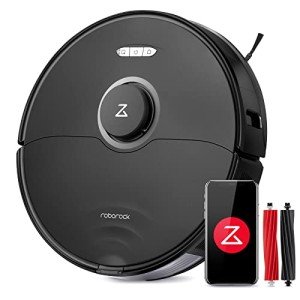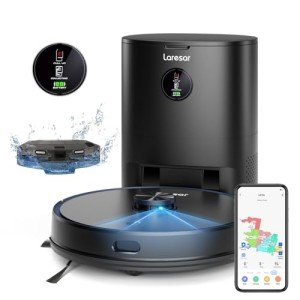11 Strategies To Completely Redesign Your Robot Hoover And Mop
The Rise of Robot Hoover and Mop: A New Era in Home Cleaning
In the rapidly advancing world of innovation, the landscape of home cleaning is undergoing a considerable transformation with the introduction of robot hoover and mop systems. These smart devices are not just making our lives easier but are likewise setting new requirements for tidiness and performance. As more households embrace these innovative options, it's important to understand their abilities, benefits, and potential drawbacks. This short article looks into the features, functions, and future of robot hoover and mop systems, providing an extensive guide for those considering integrating these gadgets into their day-to-day regimens.
What Are Robot Hoover and Mop Systems?
Robot hoover and mop systems are autonomous cleaning devices created to preserve the cleanliness of floors in homes and offices. These robots are geared up with innovative sensors, mapping technology, and AI algorithms that allow them to navigate through rooms, recognize dirt and challenges, and tidy effectively without human intervention. The hoover component is responsible for vacuuming dust, dirt, and particles, while the mop element is tasked with damp cleaning and polishing difficult surfaces.
Secret Features and Functions
Autonomous Navigation
- Mapping and Planning: Modern robot hoover and mop systems utilize LiDAR (Light Detection and Ranging) or visual navigation systems to produce a map of the environment. This enables them to plan effective cleaning routes and avoid barriers.
- Smart Obstacle Detection: Advanced sensing units assist the robot detect and navigate around furnishings, animals, and other challenges, guaranteeing that it doesn't get stuck or trigger damage.
Multi-Surface Cleaning
- Versatility: These robotics can clean a variety of surface areas, including hardwood, tile, and carpet. Some models are even designed to shift effortlessly in between different kinds of floor covering.
- Adjustable Water Flow: For the mopping function, adjustable water circulation settings guarantee that the ideal quantity of wetness is used on different surface areas to avoid water damage.
Adjustable Cleaning Schedules
- Timed Cleaning: Users can set particular times for the robot to start cleaning, enabling a constant and foreseeable cleaning schedule.
- Remote Control: Most robotics can be managed via a mobile phone app, making it possible for users to begin, stop, or schedule cleaning sessions from anywhere.
Effective Dirt and Dust Removal
- High-Quality Filters: Many designs include HEPA filters that catch great dust and irritants, making them perfect for families with allergies.
- Strong Suction: Powerful motors supply strong suction to raise and get rid of ingrained dirt and debris from floorings.
Maintenance and Convenience
- Self-Emptying Bins: Some sophisticated designs feature self-emptying bins, lowering the need for regular manual maintenance.
- Auto-Return to Charging Station: When the battery is low, the robot automatically returns to its charging station, guaranteeing it is constantly ready for the next cleaning session.
Combination with Smart Home Devices
- Voice Control: Compatibility with smart home assistants like Amazon Alexa and Google Assistant allows for voice-activated cleaning.
- Home Security: Some models can be geared up with electronic cameras and movement sensing units, functioning as security gadgets while they clean up.
Advantages of Robot Hoover and Mop Systems
Time and Effort Savings
- Hands-Free Cleaning: The primary advantage of these robots is their ability to clean up without continuous human guidance, freeing up time for other activities.
- Constant Cleaning: Scheduled cleaning sessions ensure that floors stay tidy and hygienic, reducing the frequency of manual cleaning.
Enhanced Cleanliness
- Dust and Allergen Reduction: High-quality filters and strong suction can significantly lower the quantity of dust and allergens in the home, leading to a much healthier living environment.
- Deep Cleaning: Some models are equipped with scrub brushes and mopping cloths that can access hard-to-reach areas, offering a deeper clean.
Eco-Friendly
- Energy Efficiency: Robot hoover and mop systems are developed to be energy-efficient, utilizing less power compared to traditional vacuum.
- Water Usage: The mopping function uses water sensibly, helping to save resources.
User-Friendly
- Easy Setup: Most models include user-friendly interfaces and easy setup processes, making them available to tech-savvy and non-tech-savvy users alike.
- App Integration: Smartphone apps supply in-depth cleaning reports, allowing users to monitor and change cleaning settings as required.
Possible Drawbacks
Cost
- Preliminary Investment: While the long-term savings on manual cleaning are obvious, the in advance expense of a robot hoover and mop system can be considerable.
Upkeep
- Routine Cleaning: The brushes, filters, and mopping cloths need to be cleaned up frequently to ensure optimum efficiency.
- Battery Life: Like all battery-operated devices, the robot's battery requires regular charging and replacement.
Limited Cleaning Capabilities
- Stairs and High Surfaces: Most robotics are not designed to tidy stairs or high surfaces like counter tops.
- Heavy Dirt and Messes: For severe dirt and spills, manual cleaning might still be necessary.
Best Practices for Using Robot Hoover and Mop Systems
Pre-Cleaning Preparation
- Clear the Floors: Remove big objects and clutter from the floor to ensure the robot can browse easily.
- Protected Pets and Children: Keep family pets and kids away from the robot during cleaning to avoid accidents and disturbance.
Routine Maintenance
- Tidy the Brushes and Filters: Regularly tidy the brushes and filters to prevent obstructing and preserve performance.
- Check for Obstacles: Regularly inspect for any small items that may posture a threat to the robot, such as cords or small toys.
Enhance Cleaning Settings
- Adjust Water Flow: Set the water circulation to the appropriate level for the kind of flooring.
- Arrange Cleaning Sessions: Set a cleaning schedule that fits your home's requirements, such as daily or weekly cleaning sessions.
Display and Adjust
- Review Cleaning Reports: Use the app to evaluate cleaning reports and identify areas that may require extra attention.
- Update Firmware: Keep the robot's firmware updated to benefit from the current features and improvements.
Frequently asked questions
Q: How often should I clean my robot hoover and mop?
- A: It's recommended to clean the brushes, filters, and mopping fabrics after every 3-5 cleaning sessions to guarantee optimum performance.
Q: Can these robots tidy stairs?
- A: No, many robot hoover and mop systems are created to tidy flat surfaces and can not browse stairs.
Q: Are they appropriate for homes with family pets?
- A: Yes, many models are equipped with Pet hair vacuum hair cleaning functions and can handle the additional dirt and hair that family pets bring into the home.
Q: How long do the batteries last?
- A: Battery life differs by design, but the majority of robotics can clean up for 90-120 minutes before needing a recharge.
Q: Can I manage the robot with my voice?

- A: Yes, numerous designs work with smart home assistants like Amazon Alexa and Google Assistant, permitting for voice-activated control.
Robot hoover and mop systems represent a significant leap forward in home cleaning innovation. Their ability to navigate autonomously, tidy several surface areas, and incorporate effortlessly with smart home gadgets makes them an appealing option for hectic households. While there are some disadvantages, such as the initial cost and the requirement for routine upkeep, the advantages of constant, hands-free cleaning and enhanced indoor air quality are tough to overlook. As innovation continues to evolve, these robotics are likely to end up being even more effective and user-friendly, further strengthening their place in the modern-day home.
By understanding the features, functions, and best practices for these gadgets, house owners can make informed decisions about whether a robot hoover and mop system is the best option for their needs. Whether you're aiming to save time, improve cleanliness, or welcome the latest in home automation, these robotics provide a compelling solution to the olden issue of floor cleaning.




